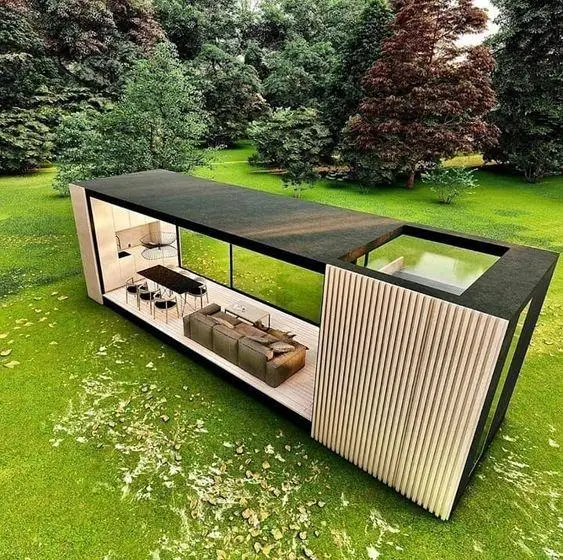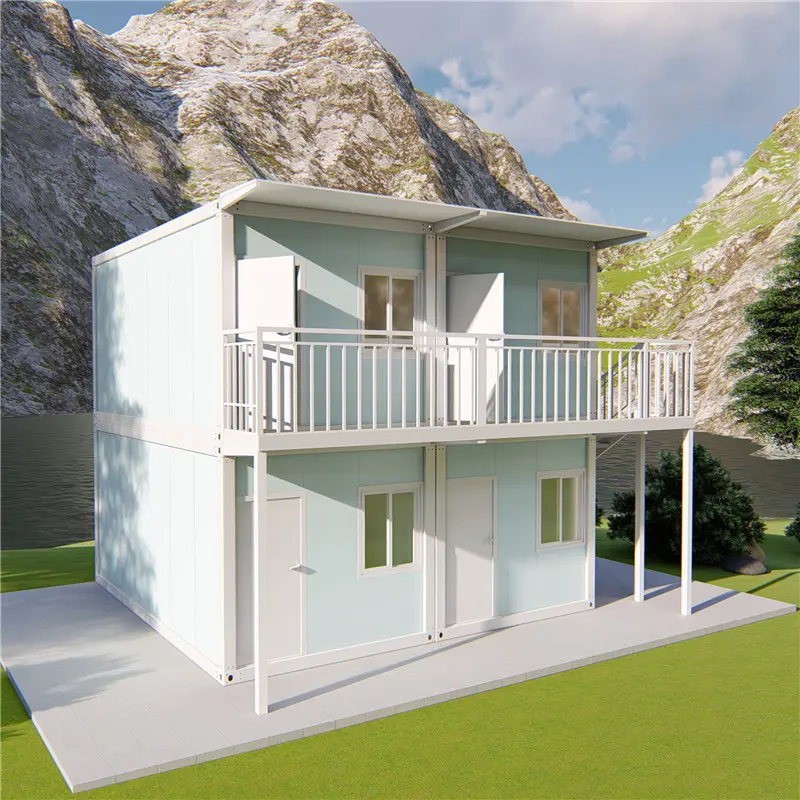In the realm of sustainable architecture, a compelling discourse has emerged around the innovative concept of green container homes. This avant-garde approach not only addresses the pressing need for eco-friendly living but also sparks a revolution in redefining the fabric of homes. This discussion delves into the multifaceted aspects of green container homes, exploring their environmental impact, design flexibility.
Environmental Impact:
At the heart of the green container home movement lies a commitment to minimizing our carbon footprint. Utilizing repurposed shipping containers as foundational building blocks not only reduces construction waste but also contributes to the reduction of the demand. This eco-conscious approach aligns with the global imperative to combat climate change and foster sustainable living practices.

Design Flexibility:
One of the intriguing aspects of green container homes is their inherent design flexibility. These modular structures offer a blank or white canvas for architects and homeowners alike to unleash their creativity. The adaptability of container homes enables diverse architectural styles, from minimalist, sleek designs to more intricate and artistic expressions. This flexibility not only meets the preferences of individual homeowners but also challenges conventional notions of what a home should look like.
Cost-Effective Solutions:
Beyond their environmental and design benefits, green container homes offer a cost-effective alternative to traditional construction methods. The repurposing of shipping containers significantly reduces construction time and labor costs. This financial efficiency not only makes sustainable living more accessible but also prompts a reconsideration of the economic and finical viability.
Community Impact and Urban Development:
As the discourse on container homes gains momentum, its potential impact on community and urban planning and development becomes increasingly evident. Meanwhile, the scalability of container homes makes them a viable solution for addressing housing shortages in densely populated urban areas. The communal aspects of container home villages foster a sense of shared responsibility for sustainable living practices.
Challenges and Opportunities:
While the concept of green container homes holds immense promise, it is not without its challenges. Regulatory hurdles, public perception, and infrastructural considerations pose significant obstacles to widespread adoption. However, these challenges present opportunities for collaboration between policymakers, architects, and the public to create a regulatory framework that supports and encourages the integration of container homes.

Conclusion:
The discourse on green container homes marks a paradigm shift in how we conceptualize, design, and build our living spaces. From reducing environmental impact and offering design flexibility to providing cost-effective solutions and influencing urban development. But, as this discussion momentum, it prompts us to reimagine the essence of our homes, ushering in an era sustainability.